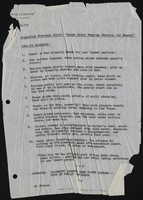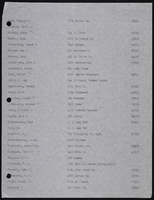Search the Special Collections and Archives Portal
Search Results
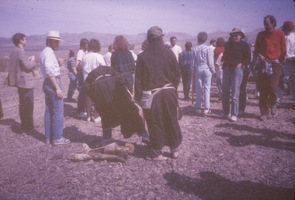
Slide of protesters at a demonstration near the Nevada Test Site, March 24, 1989
Date
1989-03-24
Archival Collection
Description
Color image of protesters passing through a wire fence at an anti-nuclear testing demonstration held in the Nevada desert on Good Friday.
Image
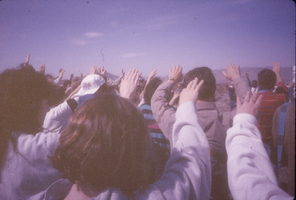
Slide of protesters with upraised arms at a demonstration at the Nevada Test Site, March 24, 1989
Date
1989-03-24
Archival Collection
Description
Color image of protesters with their arms upraised at an anti-nuclear testing demonstration held in the Nevada desert on Good Friday.
Image
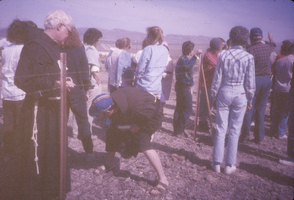
Slide of protesters at a demonstration near the Nevada Test Site, March 24, 1989
Date
1989-03-24
Archival Collection
Description
Color image of protesters passing through a wire fence at an anti-nuclear testing demonstration held in the Nevada desert on Good Friday.
Image

Slide of protesters at a demonstration near the Nevada Test Site, March 25, 1990
Date
1990-03-25
Archival Collection
Description
Color image of a crowd of protesters during a Franciscan weekend of peaceful demonstrations against nuclear testing.
Image
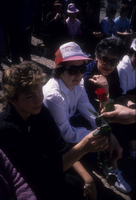
Slide of protesters at a demonstration near the Nevada Test Site, March 25, 1990
Date
1990-03-25
Archival Collection
Description
Color image showing a close-up of three protesters during a Franciscan weekend of peaceful demonstrations against nuclear testing.
Image
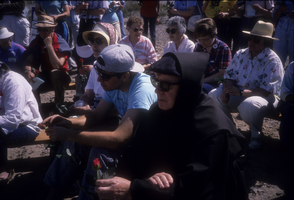
Slide of protesters with roses at a demonstration near the Nevada Test Site, March 25, 1990
Date
1990-03-25
Archival Collection
Description
Color image of protesters holding red roses during a Franciscan weekend of peaceful demonstrations against nuclear testing.
Image
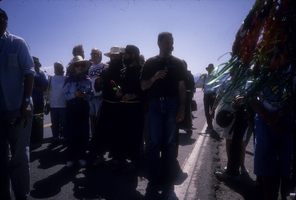
Slide of protesters with roses at a demonstration near the Nevada Test Site, March 25, 1990
Date
1990-03-25
Archival Collection
Description
Color image of protesters holding red roses during a Franciscan weekend of peaceful demonstrations against nuclear testing.
Image
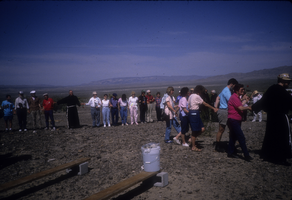
Slide of protesters at a demonstration near the Nevada Test Site, March 25, 1990
Date
1990-03-25
Archival Collection
Description
Color image of protesters holding hands during a Franciscan weekend of peaceful demonstrations against nuclear testing.
Image
Pagination
Refine my results
Content Type
Creator or Contributor
Subject
Archival Collection
Digital Project
Resource Type
Year
Material Type
Place
Language
Records Classification

